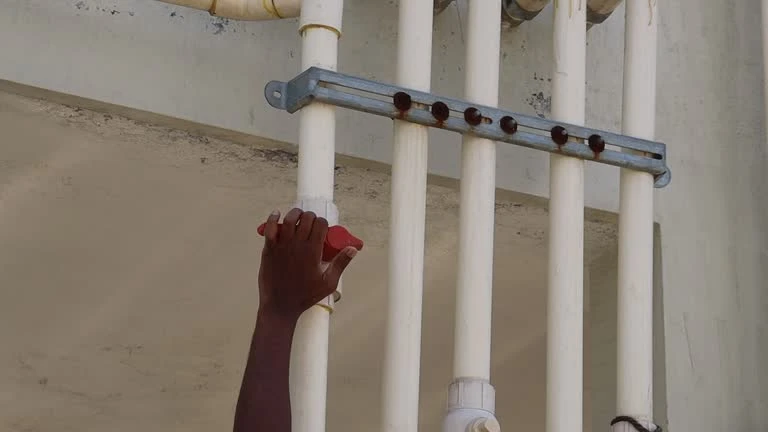The Kenya Water and Sewerage Corporation (KWSC) is taking a significant step toward modernizing the city’s water control system by installing two advanced water valves. This strategic upgrade aims to enhance the reliability, efficiency, and sustainability of the city’s water distribution network. As urban centers grow and water demands increase, such initiatives are essential to ensure equitable water access and effective resource management.
In this article, we explore the critical role of valves in water systems, the specifics of KWSC’s project, and the broader implications for residents and businesses.
Understanding Valves in Water Control Systems
Valves are mechanical devices designed to regulate, direct, or control the flow of water through pipelines. They are indispensable in urban water systems, helping maintain efficiency and operational stability.
Types of Valves Commonly Used:
- Gate Valves: Used to start or stop the flow of water but not regulate pressure.
- Butterfly Valves: Compact and efficient, these regulate water flow with minimal pressure loss.
- Pressure-Reducing Valves: Control high-pressure zones to prevent pipeline damage.
Key Functions of Valves in Water Systems:
- Flow Regulation: Ensures steady water distribution to meet varying demands.
- Leak Prevention: Stops water flow to damaged sections, minimizing wastage.
- System Maintenance: Allows isolation of sections for repairs without shutting down the entire network.

Why KWSC Is Upgrading the City’s Water Control System
The installation of two valves is part of KWSC’s broader initiative to modernize and future-proof the city’s water infrastructure.
Challenges Addressed by the Upgrade:
- Aging Infrastructure
The current system, which has been operational for decades, struggles to meet the demands of a growing urban population. - Water Loss Through Leaks
Old and inefficient valves contribute to significant water wastage, impacting supply reliability. - Uneven Water Distribution
Pressure imbalances in the system lead to some areas receiving excess water while others face shortages.
Expected Benefits of the New Valves:
- Improved Reliability: Enhanced system performance ensures consistent water supply.
- Reduced Maintenance Costs: Durable valves minimize the need for frequent repairs.
- Sustainability: Efficient water control aligns with KWSC’s goal of reducing wastage.
The Installation Process
Installing new valves in a live urban water system is a complex process that requires careful planning and execution.
Step 1: Site Assessment and Planning
KWSC engineers survey the water network to determine optimal valve placement. Factors like pipeline condition, water pressure zones, and potential disruptions are evaluated.
Step 2: Procurement of Valves
The valves selected are tailored to the city’s specific water control needs, ensuring compatibility and long-term durability.
Step 3: System Shutdown and Excavation
To install the valves, the affected pipeline sections are temporarily shut down. Workers then excavate the designated areas to access the pipelines.
Step 4: Valve Installation
Technicians integrate the valves into the pipeline, ensuring a secure fit and proper alignment. Pressure and flow tests verify their functionality.
Step 5: Restoration and Testing
After installation, the site is restored to its original condition, and the entire system is tested to ensure smooth operation under various conditions.
Implications for Residents and Businesses
The installation project is expected to bring both short-term disruptions and long-term benefits.
Short-Term Challenges:
- Temporary Water Outages
While new valves are integrated, some areas may experience brief interruptions in water supply. - Traffic Disruptions
Excavation work may require road closures or diversions near the installation sites.
Long-Term Benefits:
- Reliable Water Supply: Improved flow control ensures consistent access to water across the city.
- Reduced Water Bills: Minimizing leaks leads to cost savings for KWSC and, potentially, for consumers.
- Enhanced Urban Planning: Reliable water systems attract investments and improve quality of life.
Broader Impact on Urban Water Management
This initiative by KWSC demonstrates how targeted upgrades can strengthen a city’s water infrastructure. Installing the two valves is part of a long-term strategy to create a resilient, sustainable, and efficient water control system.
The project also aligns with global trends in urban water management, emphasizing:
- Smart Infrastructure: Leveraging technology for precise flow and pressure monitoring.
- Sustainability: Reducing water wastage to conserve resources for future generations.
- Community Engagement: Informing residents about ongoing projects to foster understanding and cooperation.
Conclusion
KWSC’s decision to install two advanced valves represents a critical step toward modernizing the city’s water control system. By addressing challenges like aging infrastructure and water wastage, the project promises to deliver long-lasting benefits to residents and businesses.
As urban populations grow and water resources face increasing pressure, initiatives like this serve as a blueprint for sustainable urban development. The city’s water system will become more reliable, efficient, and resilient—paving the way for a better future.
FAQs
1. What is the purpose of installing these two valves?
The valves will regulate water flow, improve pressure control, and minimize leaks in the city’s water system.
2. Will residents experience water supply interruptions during the installation?
Yes, some areas may face temporary outages. KWSC will notify affected residents in advance.
3. How do valves contribute to water conservation?
Valves prevent leaks and wastage by allowing precise control of water flow and isolating damaged sections for repairs.
4. How long will the installation process take?
The timeline varies depending on site conditions and project scope. KWSC typically shares updates on progress and completion.
5. Are there environmental benefits to this project?
Yes, reducing water wastage supports sustainability by conserving precious resources and lowering the environmental footprint of water distribution.












